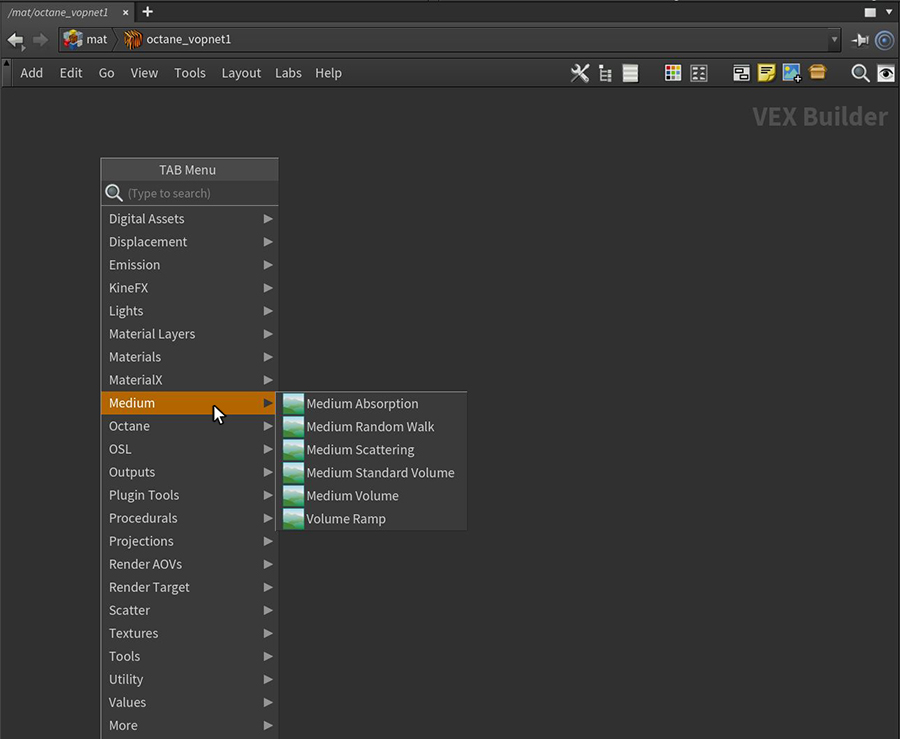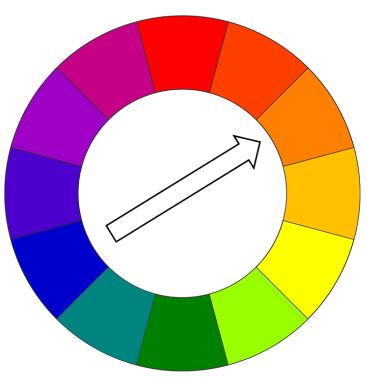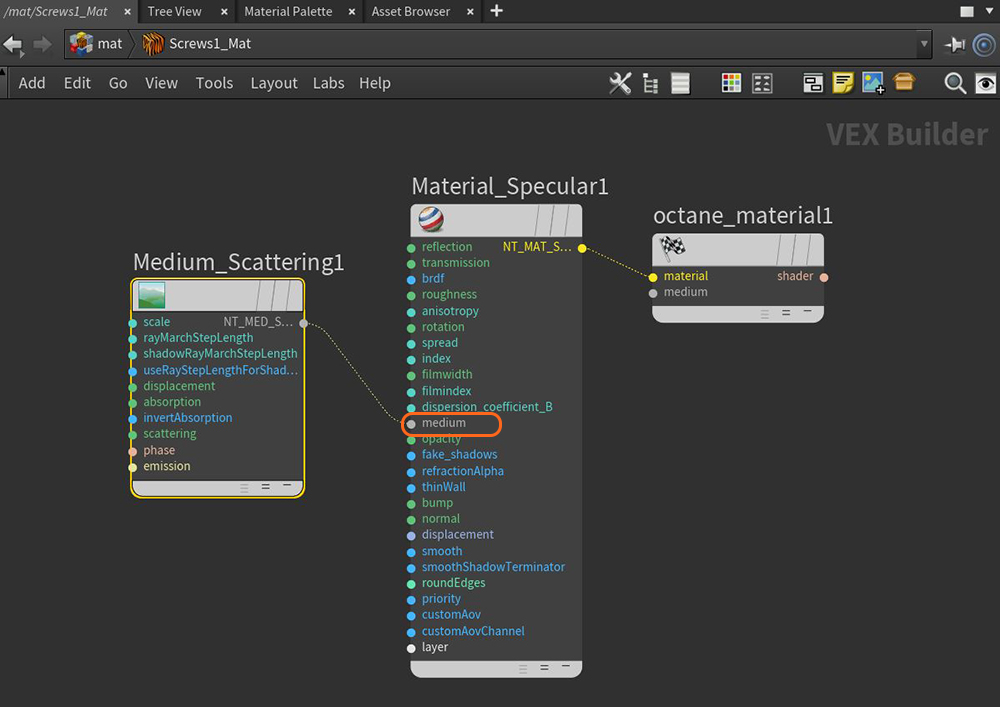
Octane supports participating media inside objects (absorption, subsurface scattering, and volume). These settings are stored in Medium nodes, which are attached to the corresponding input pins of DiffuseAmount of diffusion, or the reflection of light photons at different angles from an uneven or granular surface. Used for dull, non-reflecting materials or mesh emitters., SpecularAmount of specular reflection, or the mirror-like reflection of light photons at the same angle. Used for transparent materials such as glass and water., Universal, or Null material nodes.
There are five primary types of medium nodes:
Rendering a medium requires the Path Tracing or PMC kernel, with a large Maxdepth setting. For Diffuse materials, you can use the Direct Light kernel with Diffuse GI mode as well. The medium nodes can be found in the Medium category when right-clicking in an Octane VOP network (Figure 1).

Figure 1: Accessing the Medium nodes in an Octane VOP network
Medium nodes should be added to materials that are applied to meshes that define a closed volume. A single-sided plane will not work - for example, a plane representing a leaf will not work properly if a material has a medium is applied to it. The one exception is a plane representing the ground. Octane treats the ground plane as an infinite, deep surface.
Specular and Universal materials are the best choice when using a medium node. For both material types, activating the Fake Shadows attribute helps to lighten the overall transparency effect.
In the physical world, if the Absorption attribute use a color, the light transmitted through the surface is shaded as the complementary color (figure 2).

Figure 2 : A diagram shows that complementary colors are opposite each other on the color wheel
Note: By default, Invert Absorption is active in the Absorption and Scattering nodes which will make the these real-world physical characteristics behave in an opposite fashion. For example: If blue is specified as the absorption color, the transmitted light will be blue.
A Specular materialUsed for transparent materials such as glass and water. works best. Set TransmissionA surface characteristic that determines if light may pass through a surface volume. to a value other than 0. However, for the best result, set both Reflection and Transmission to a non-zero value (Figure 2).

Figure 2: Connecting a Scattering node to the Medium input of a Specular material
On Diffuse materials, subsurface scattering only works after you activate Transmission using a value, color, or Texture map.
Set the Reflection value to a low value because the part of the spectrum that is not reflected can enter the object for scattering. If you set the Reflection to 1.0, all light gets reflected regardless of the Transmission value. If you set Transmission to 0.0, all light gets transmitted, but this gives an unnatural appearance. Values of 0.1 - 0.2 are a good starting point.
Also, if the reflection is colored, the transmitted light has the complementary color For example, if the reflection is set to yellow, the transmitted light is bluish.